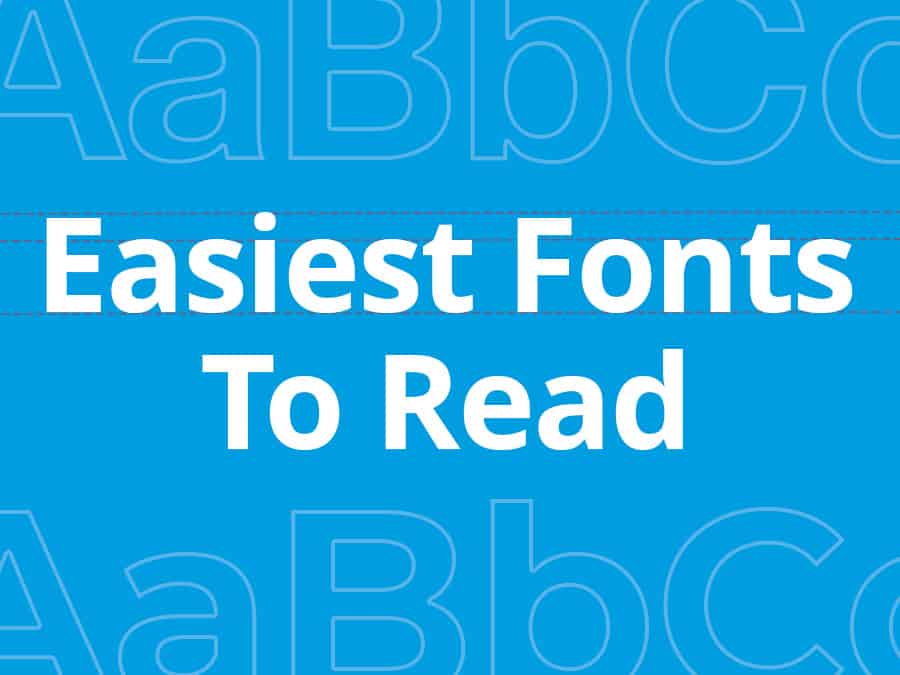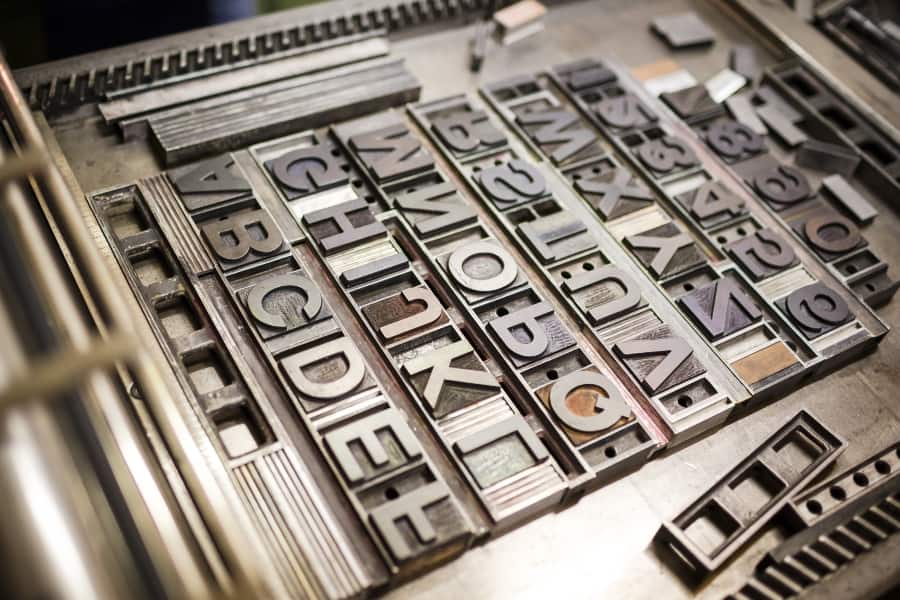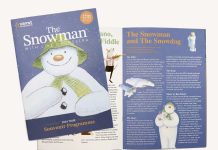The easiest fonts to read transform confusion into comprehension. With the right font, your content’s clarity skyrockets. It’s where readability meets aesthetics. Remember, every character counts!
What Makes a Font Easy to Read?
There are three things that make a font easy to read:
- Size
- Space
- Style
These are the touchstones of readability. Larger typefaces, ample spacing, and clear-cut styles foster smooth sailing through words. Deciphering content should be effortless, not exhausting.
Fonts should not be a hurdle in your reader’s journey but a seamless guide leading them through your content. It shouldn’t beg for attention but instead provide a calm, unobstructed path.
Stick to fonts with clear, consistent shapes, and patterns; this eases recognition and reduces cognitive load. An easy font to read is a trove of simplicity, consistency, and quick recognition.
Font Weight Matters
Heavier doesn’t mean better. Bold fonts add emphasis but can overwhelm the eyes in excess. Regular or medium-weight fonts are usually the ticket to readable text. Balance is everything.
Don’t underestimate the influence of weight. Yes, lighter fonts offer an ethereal aesthetic, but they lose the readability battle against diverse backgrounds. On the other extreme, bold fonts can be too forceful, dominating your page and tiring the eyes.
Adjusting font-weight correctly is a game of balance – it’s the tightrope walk between visual appeal and optimum legibility.
Serif or Sans?
Serif or sans serif? Both have their strengths. Serifs guide the reading flow with ‘feet’. Serif fonts, with their subtle ‘feet’, aid the flow of reading, especially in print.
Sans serif, on the other hand, boasts a minimalist, clean look that thrives on digital screens. Sans serifs offer a modern, clean look.
The rule of thumb? Opt for serif fonts for printed material and sans serif for on-screen text. Your choice hinges on the medium of your content. The easiest fonts to read depend on context and contrast.
A Healthy Differentiation Between Letter Shapes
When it comes to the easiest font to read, differentiation is your secret weapon. Each letter should stand on its own. Avoid similar-looking ‘1’, ‘I’, and ‘l’ or ‘0’ and ‘O’ as this can frustrate your reader.
Clear distinctions boost legibility. Select a typeface that celebrates individuality, where each character holds its own. Letter differentiation fosters faster recognition and comprehension, the primary goal of readable typography.
The Best Fonts for Different Use Cases
Choosing the best font to read is as much about purpose as preference. Your chosen font carries a message beyond the words it forms.
It’s a silent influencer. Purpose, platform, and audience all influence what’s the easiest font to read. Get it right, and your text turns from mundane to magnetic.
Best Fonts for Webpages
In the digital realm, a font’s on-screen performance is paramount. Webpages thrive on simplicity. However, consistency across devices also matters.
Here, sans-serif fonts rule the roost. Fonts like Arial, designed for early screens, still reign supreme, while Verdana excels with its wider character spacing. Roboto, crafted by Google, unites mechanical and natural typography, mastering screens of all sizes.
These fonts are sleek, scalable, and screen-friendly. When reading comfort meets cross-platform consistency, your webpage wins.
Best Fonts for Printed Designs
Similarly, Print requires precision to maximise its on-page performance. On paper, you need crisp, detailed fonts to combat ink spread.
Serif fonts like Times New Roman set the standard, with its small size legibility. Garamond is another timeless favourite, oozing sophistication, while Baskerville shows strength in headers and body text.
Print deserves accuracy and style. These fonts deliver just that.
Choosing the Right Font Means Staying Inside the Box
Use a font that fits its purpose. A professional document calls for a professional font; an artistic piece, an artistic font.
Creativity is a charm, but in the realm of typography, it can be a risky gamble. Opting for a flamboyant, unconventional font might appear adventurous but can seriously hamper readability.
Be conventional. Avoid excessively ornate or abstract fonts. The easiest fonts to read often lie within traditional boundaries. Sometimes, it pays to play safe.
Georgia
Georgia speaks volumes. It’s a serif workhorse, excelling in both the digital and print realms.
Conceived specifically for screen readability, it shines at small sizes and low resolutions, its versatility is personified. Yet, its generous x-height and character spacing make it equally effective in print.
The easiest fonts to read often dance between digital and print, and Georgia leads the waltz.
Helvetica
Helvetica is a household name, the epitome of sans-serif fonts. It’s the paragon of sans-serif fonts.
Its clean, no-fuss design excels in legibility, making it ideal for both print and digital platforms. It’s a darling of professionals, able to handle headers, body text, or small print with aplomb.
Helvetica is a no-brainer for clarity. The easiest font to read is one that delivers in all conditions. Helvetica certainly fits that bill.
Quicksand
Quicksand is airy and approachable. Its rounded letterforms emanate warmth and approachability. If your content is casual or your brand friendly, Quicksand hits the right note.
For those seeking a modern, light-hearted touch, Quicksand isn’t just one of the easiest fonts to read; it’s a breath of fresh air.
Futura
Futura is where geometry meets grace. The evenly balanced characters of this sans-serif font make it a modernist masterpiece. Its forward-thinking aesthetic fits corporate environments, advertisements, and design-oriented texts.
Whether in print or digital, Futura stands for progress.
Karla
For those seeking a minimalist yet highly readable font, Karla enters the scene.
Karla is the underdog of sans-serif fonts. It’s minimalist, yet offers excellent readability. For digital screens, it’s a hidden gem. This sans-serif font excels on digital screens, offering excellent legibility even at smaller sizes.
It strikes a balance between simplicity and character differentiation. The easiest fonts to read sometimes hide in simplicity. With Karla, it steps into the light.
Montserrat
Say hello to Montserrat, a sans-serif superstar. Montserrat is versatile and highly legible at various weights and sizes. From commanding headers to detailed body text, it keeps the reading experience smooth.
Montserrat doesn’t just aspire to be easy to read; it aims to captivate.
When Should I Use Serif/Sans Serif Typefaces?
Serif for sustained reading, Sans for crisp digital clarity. Use Serifs for long texts and print media, where their guiding ‘feet’ help lead the eye and maintain reading flow. When your platform is digital, opt for Sans serifs. They champion on-screen readability with their clean lines.
The easiest fonts to read aren’t about Serif or Sans. It’s about matching the typeface to the task. Context is king.
Where can I use these fonts?
Remember, the easiest fonts to read are a balance of factors: size, weight, style, and differentiation. It’s not just about beauty—it’s about brains too. Choose wisely. Make every character count.
If you want some free fonts to have in your artwork while using our design tool, we’ve got you covered!








